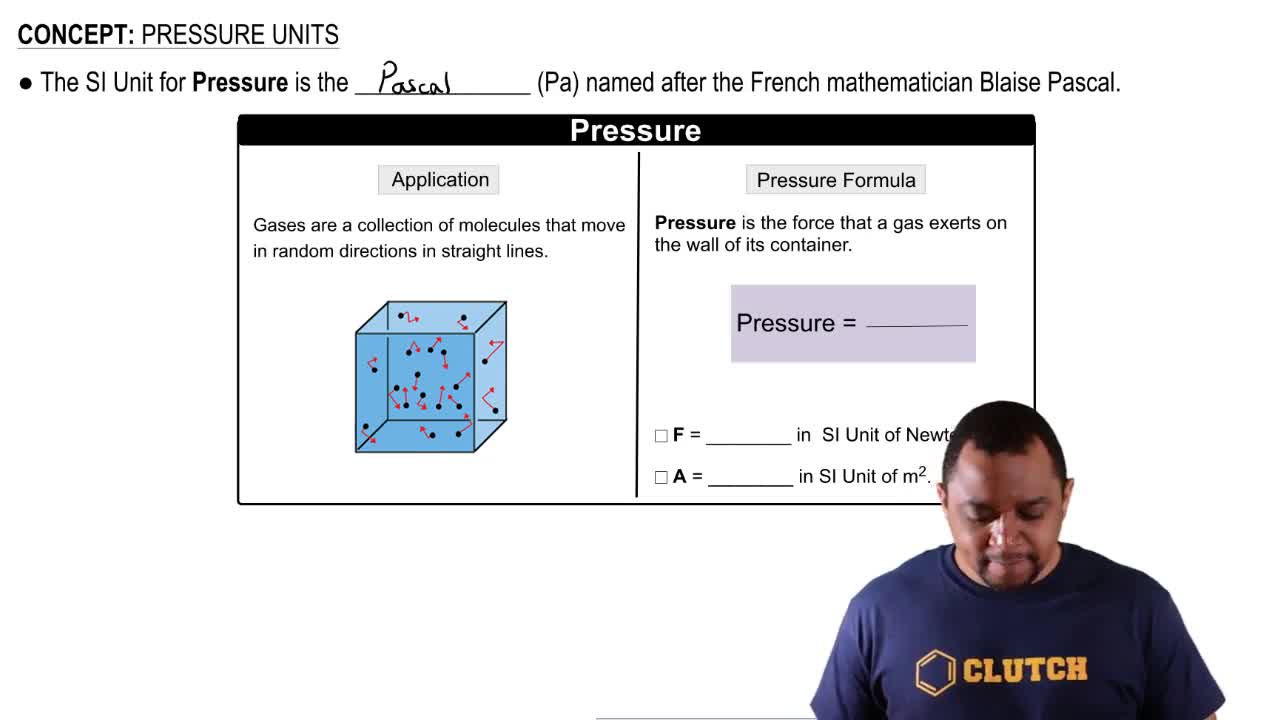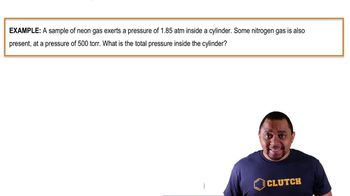Here are the essential concepts you must grasp in order to answer the question correctly.
Pressure Units
Pressure is a measure of force applied per unit area and can be expressed in various units, including torr, psi (pounds per square inch), and atmospheres. Understanding how to convert between these units is essential for solving problems related to pressure in different contexts, such as atmospheric pressure at high altitudes.
Recommended video:
Conversion Factors
Conversion factors are numerical values used to convert a quantity from one unit to another. For pressure, knowing the relationship between torr and psi is crucial; specifically, 1 torr is approximately equal to 0.0193368 psi. Using this conversion factor allows for accurate calculations when changing pressure units.
Recommended video:
Atmospheric Pressure
Atmospheric pressure is the pressure exerted by the weight of the atmosphere above a given point. It decreases with altitude, which is why the pressure on Mount Everest is significantly lower than at sea level. Understanding how atmospheric pressure varies with elevation helps contextualize the importance of pressure measurements in different environments.
Recommended video:




